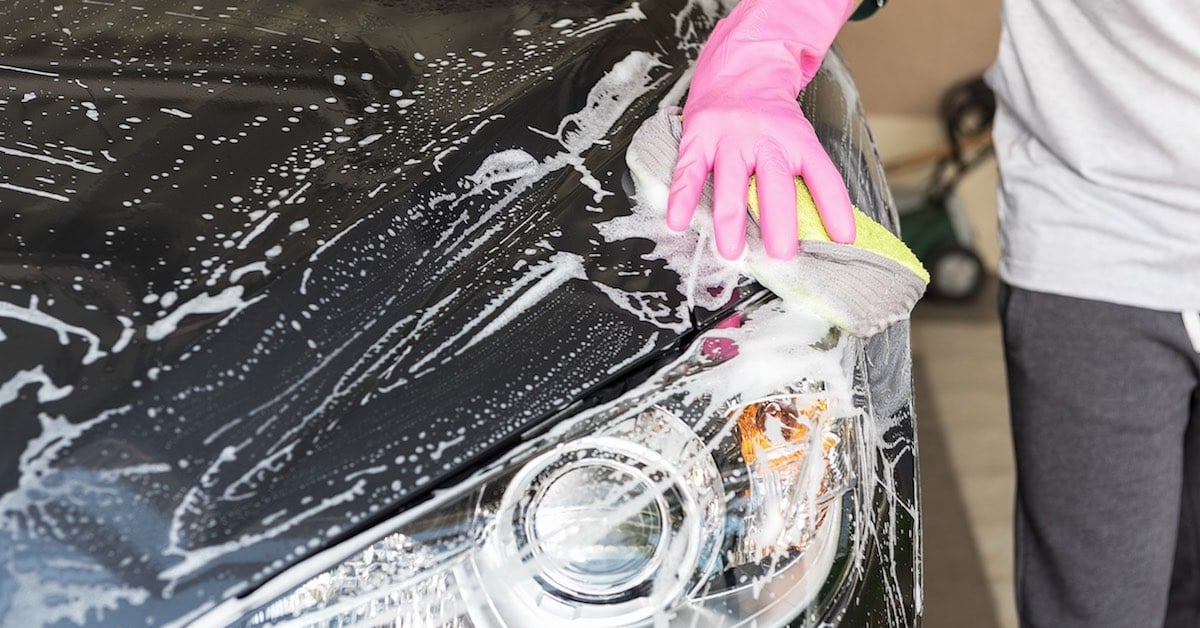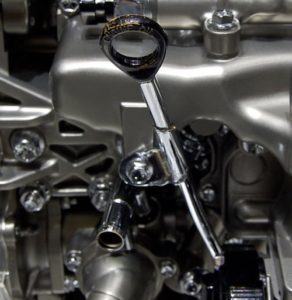
Today’s cars and trucks are more high-tech than ever.
Not all vehicle maintenance requires you to have an in-depth knowledge of automotive mechanics or even be handy with a set of tools, however.
The simplest of car maintenance tasks can be handled by anyone in their driveway or garage. Here are several reasons to make use of the car care tips included in this post:
- your vehicles will operate more safely
- well-maintained vehicles are more reliable and have a longer life
- you’ll lower your carbon footprint
- get the satisfaction of doing your own car maintenance
- you’ll save money on car repair costs
- your vehicles will look better
Simple car care tips to protect your investments
A lot of car and truck owners pay little attention to the needs of their vehicles until a problem arises.
Yes, we’ll bring them into our auto repair shop once or twice year for a regularly scheduled oil change and other maintenance. There’s more that drivers can do, however, to ensure their vehicles look and run their best.
Performing your own regular automotive check-ups and light maintenance when needed will go a long way towards protecting the sizable investment you’ve made in your vehicles.
The maintenance tasks included in these seven car care tips are easy to do and won’t require much of a time investment.
1. Inspect your battery
Your vehicle isn’t going anywhere if its battery fails, so take the time for a quick visual inspection and some occasional cleaning of this vital car component.
At least once a year, check your battery terminals for any signs of dry white battery acid. If there is any, remove the cables from your battery (do the negative cable first).
Use a wire brush and corrosion removal fluid from an automotive supplies retailer to clean up the corrosive material from the battery’s terminals. A mixture of baking soda and water can also be used.
Rinse off the cleaned area with some water, dry it with a rag, and reconnect the battery cables (attach the positive cable first).
Approximate time needed: 15-20 minutes
2. Change your windshield wiper blades
 One of the biggest safety concerns when driving is having a clear windshield to provide the highest level of road visibility.
One of the biggest safety concerns when driving is having a clear windshield to provide the highest level of road visibility.
It should be considered a top priority to replace worn out windshield wiper blades that skip, leave streaks on your windshield, or don’t effectively remove rain and snow. When you hear them making a squeaking noise, that’s another indicator it’s time to replace the wiper blades.
Even if your wiper blades seem to be working well, periodically inspect the rubber strips on the blades for signs of cracking. Give the rubber strips an occasional wipe with a damp rag or paper towel to remove any debris.
Just as with most of the maintenance tasks included in these car care tips, variables such as weather and vehicle usage will affect your timetable for replacing certain car parts.
Generally, it’s recommended to replace your wiper blades every 6-12 months. Next time you buy a new pair, buy an extra set you can store in the trunk and have readily available.
On most vehicles, changing the windshield wiper blades can easily be done yourself. Just follow the instructions in your owner’s manual and on the back of the packaging for the wiper blades.
Approximate time needed: 10-15 minutes
3. Change the engine air filter
Of all the care care tips listed here, changing your own engine air filter is probably the most intimidating. Rest assured, though, it’s quite easy to do.
A dirty air filter will restrict how much air flow your engine takes in, which puts extra strain on the engine. This can affect gas mileage slightly and, more noticeably, acceleration performance on your vehicles.
The frequency with which an engine air filter should be changed will depend on various factors. Driving regularly on unpaved roads and in heavy traffic will cause air filters to become clogged faster.
The maintenance schedules for changing air filters can vary widely between car manufacturers. Some recommend doing it every 15,000 miles (24,000 kilometres), while others advise you to change it every 45,000 miles (72,000 kilometres).
Check your vehicle’s owner’s manual to determine your schedule and to find your engine air filter’s location. For most vehicles, the air filter box isn’t difficult to access and may not even require tools to open.
A quick look at your air filter will let you know whether or not it should be changed. A dirty air filter will appear gray or black.
Approximate time needed: 5-10 minutes
4. Wash your vehicle
 One of the easiest car care tips to follow is to simply wash your vehicles on a regular basis. Doing so will protect the exteriors of your vehicles and keep them looking like new.
One of the easiest car care tips to follow is to simply wash your vehicles on a regular basis. Doing so will protect the exteriors of your vehicles and keep them looking like new.
While this is a simple maintenance task, it doesn’t always get done properly. Some drivers wash their car or truck too little, while others go overboard and wash it too much.
Experts say that how often you wash your car will be dictated by several factors:
- where it’s parked
- how frequently it’s driven
- weather conditions
It’s generally a good idea to wash your vehicles every 2-4 weeks, depending on the above factors. For example, if you live in areas that use road salt in the winter, it’s wise to wash your cars every week or two considering how much salt can deteriorate a vehicle’s finish and underside.
Parking in the garage is always recommended, as your cars and trucks will be less exposed to the elements. That also includes things like acidic bird droppings, tree sap, dead bugs, and airborne elements like dust, dirt, and pollen.
Approximate time needed: 20-30 minutes
5. Wax your vehicle
If you’re washing your vehicles on a regular basis to preserve the looks and integrity of their exteriors, add one more of these car care tips to your maintenance routine – give them a waxing.
Waxing can be done a lot less frequently than washing – two or three times per year is generally recommended. Some more expensive synthetic waxes claim that you’ll only need to use their products once a year.
Along with maintaining the luster of the exteriors of a vehicle, waxing also protects their clear coat and paint from those aforementioned nasty elements.
The easiest way to determine if your car or truck needs a coat of wax is to simply put a little water on the vehicle. A waxing isn’t needed if the water beads up.
There’s one more benefit to making use of these car care tips that focus on vehicle exteriors – they can improve your mileage. Testing (including a test done on TV’s MythBusters) shows that clean cars delivered better fuel efficiency than dirty ones.
Approximate time needed: 50-60 minutes
6. Check your engine fluids
 Even with vehicle dashboard indicators that indicate when fluid levels are low, it’s wise to occasionally check your fluid levels between visits to your auto garage.
Even with vehicle dashboard indicators that indicate when fluid levels are low, it’s wise to occasionally check your fluid levels between visits to your auto garage.
It doesn’t take much time to do and provides extra assurance that your vehicle’s fluids are properly topped off. Checking your fluid levels is one of the car care tips it’s especially smart to make use of before taking your vehicles on a long road trip.
Be sure to always check your fluid levels while parked on a flat surface. Use a clean rag or paper towel to wipe off your dipsticks.
Let’s start with the engine oil. You’ll get varying opinions on how to get the most accurate readings of your oil level. Some experts say to run the vehicle until it reaches normal operating temperatures, shut it off, and then wait 5-10 minutes before checking your oil dipstick.
Others say you can check the oil dipstick when the vehicle is cold. Consult your vehicle’s owner’s manual and ask your mechanic for their advice to figure out which method works for you.
Not all vehicles have a transmission fluid dipstick. If yours does, check the transmission fluid level with the vehicle running. Conversely, your vehicle should always be turned off when checking the coolant tank’s level.
Your brake fluid can be found in a reservoir tank with easy to view fluid level indicators. Also check the power steering fluid reservoir, which may have a dipstick depending on your vehicle model.
The last fluid level to check is for your windshield washer fluid, which any experienced driver should be quite familiar with.
Approximate time needed: 10 minutes
Many modern vehicles come with a tire pressure monitoring system, but it doesn’t hurt to periodically check your tire pressure manually. A good tire pressure gauge should be considered an essential tool for any driver, as is a portable tire inflator/mini air compressor.
Driving on tires that are underinflated can:
- lower your fuel economy
- damage tires and cause them to eventually blow out due to overheating
- limit your car’s ability to handle
Overinflating your tires can cause problems as well. Make sure to fill your tires to the pressure recommended by the vehicle’s manufacturer and not the psi level indicated on the actual tires.
Approximate time needed: 2 minutes
Free up space in your garage for parking
These car care tips involving visual inspections and light hands-on maintenance will keep your vehicles running smoothly.
You can also look after your vehicles simply by parking them in your garage, where they’ll be safer and protected from the weather. Garage Living can transform your garage into a space that’s clutter-free and aesthetically appealing.
And if your car care skills allow you to do more in-depth maintenance on your vehicles, we can also help. Our garage cabinet systems are ideal for a garage workshop. Our car lifts are also useful for vehicle maintenance tasks, in addition to being a great solution for adding extra garage parking space.
Schedule a free design consultation with us to plan your garage makeover.